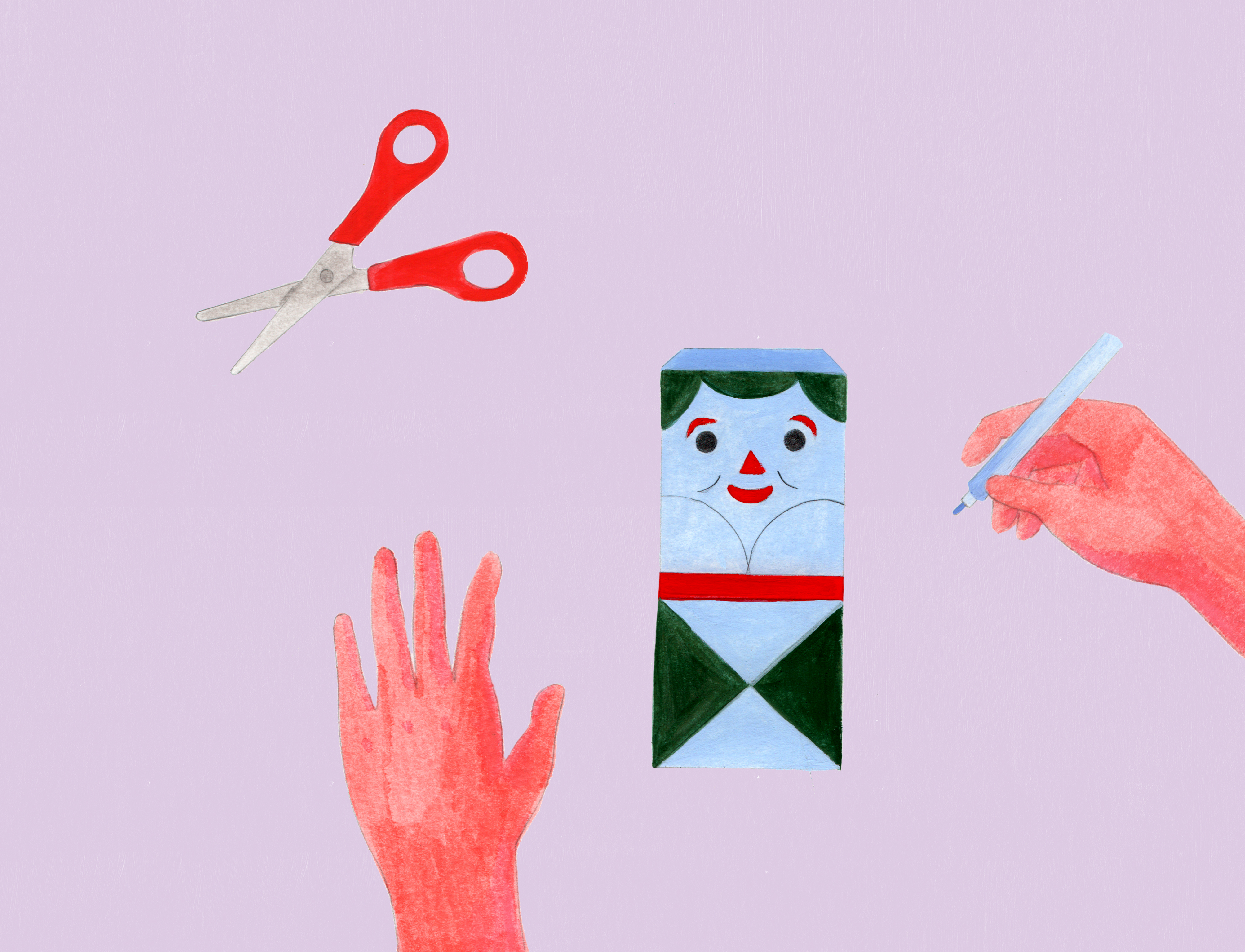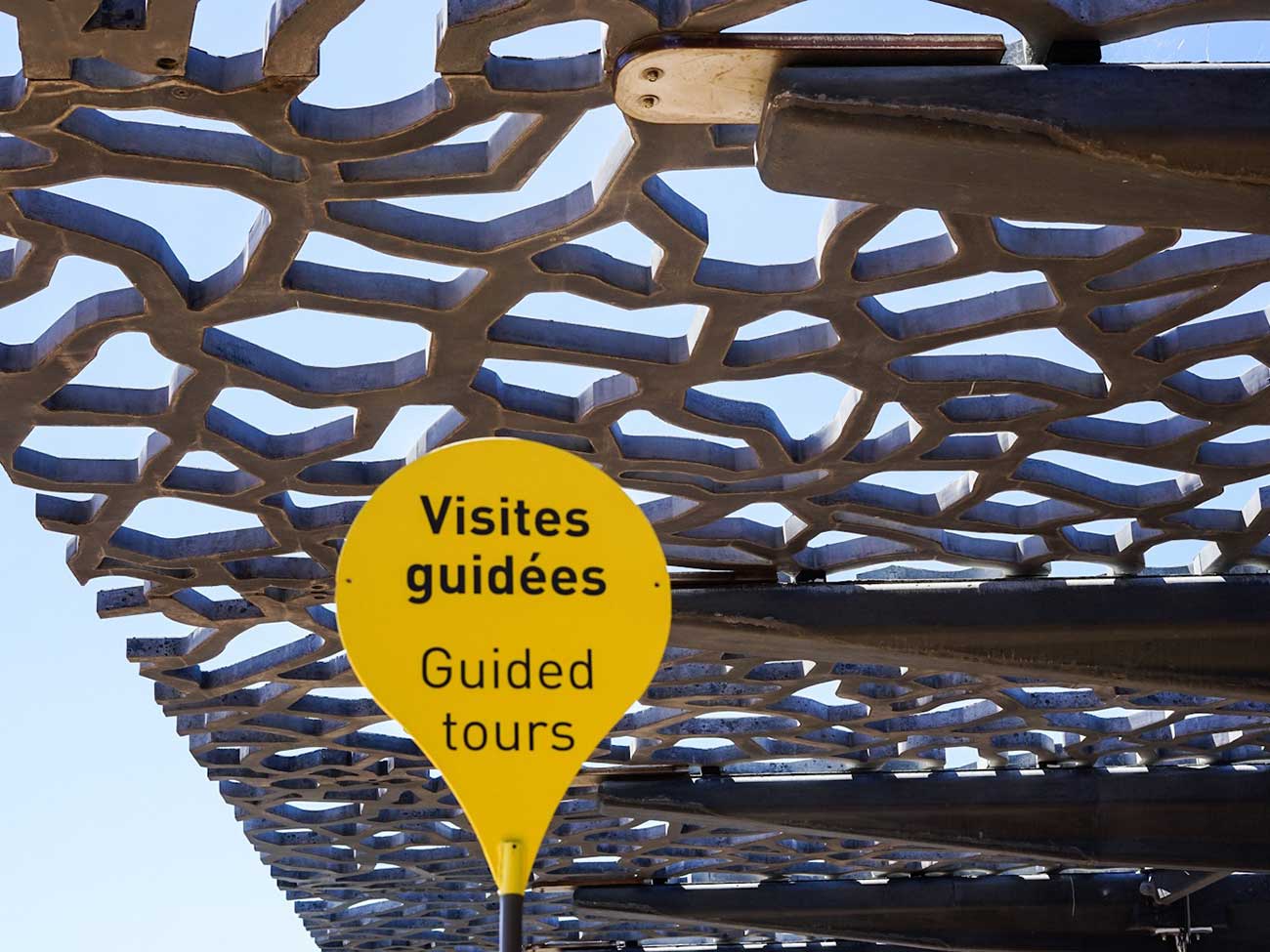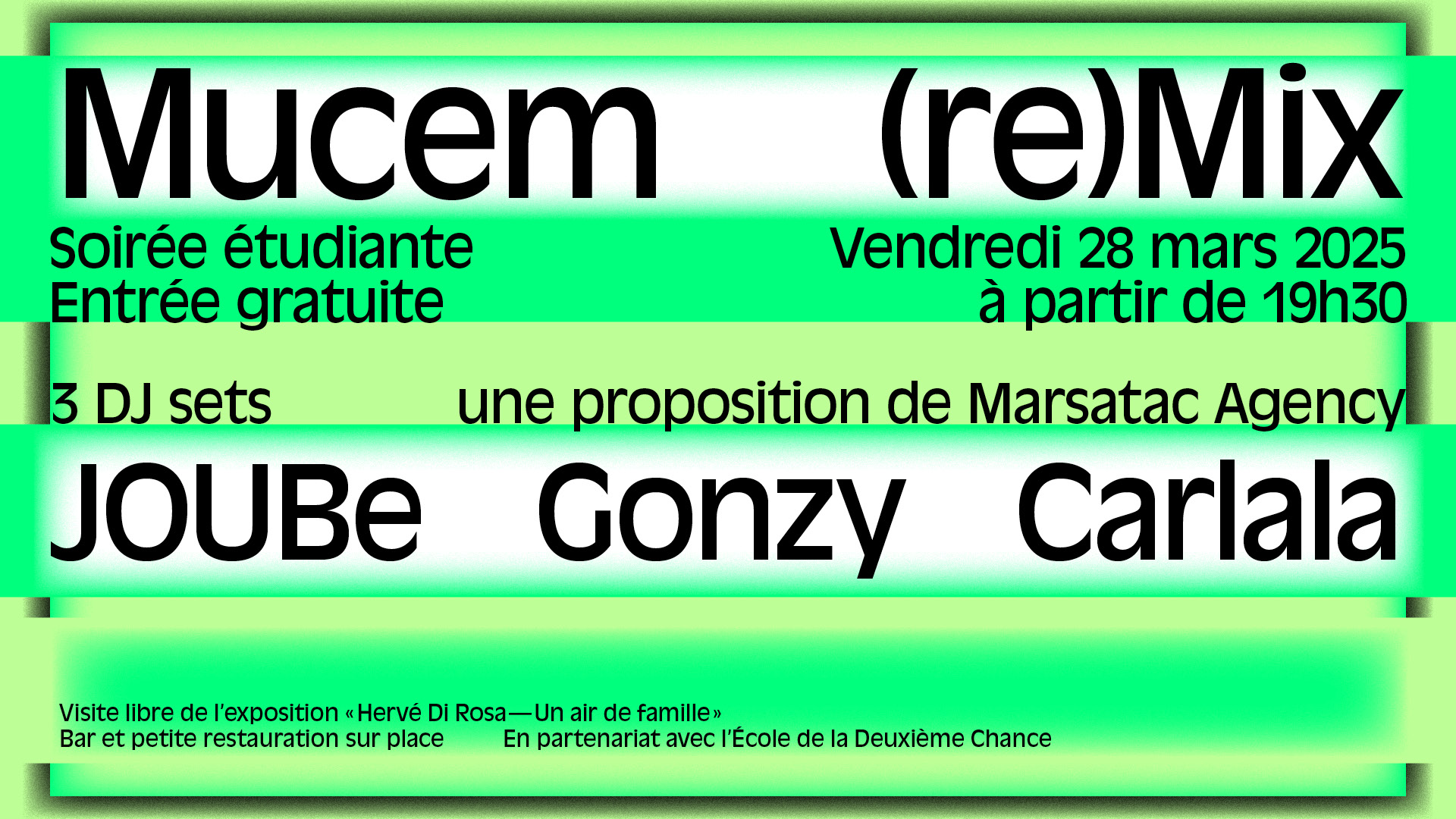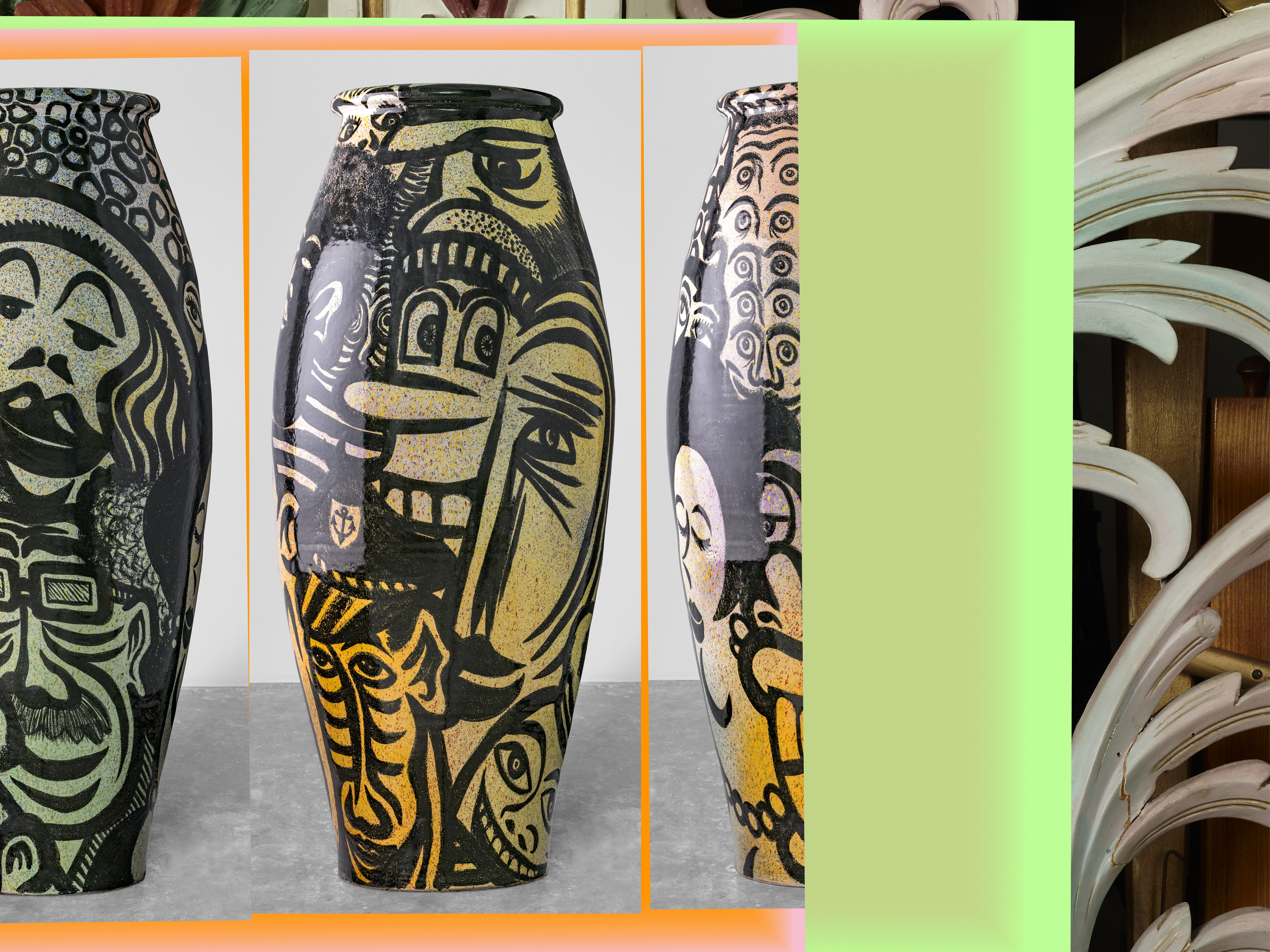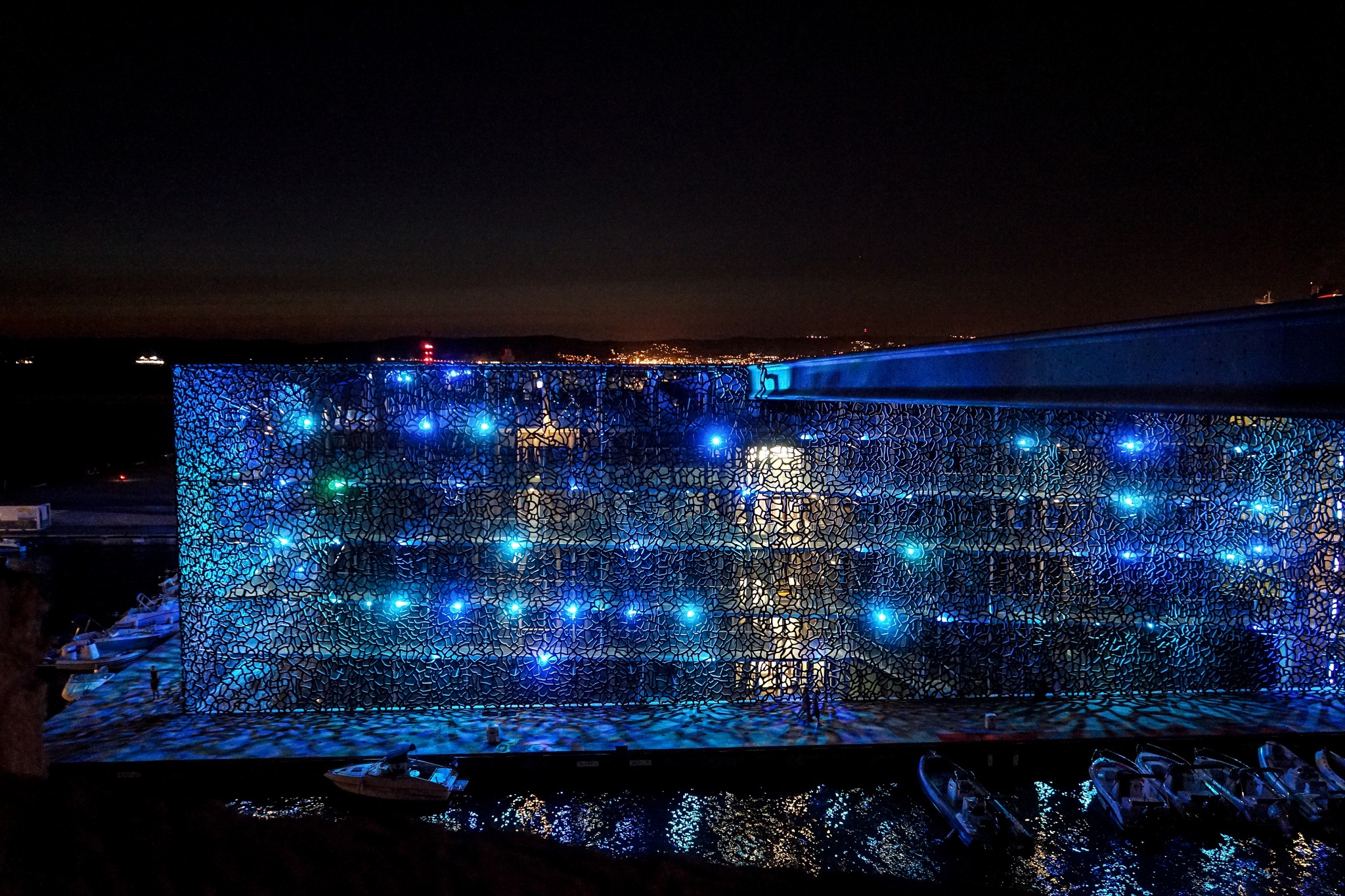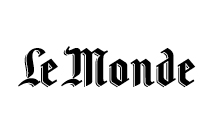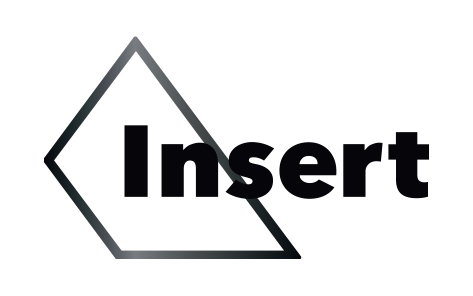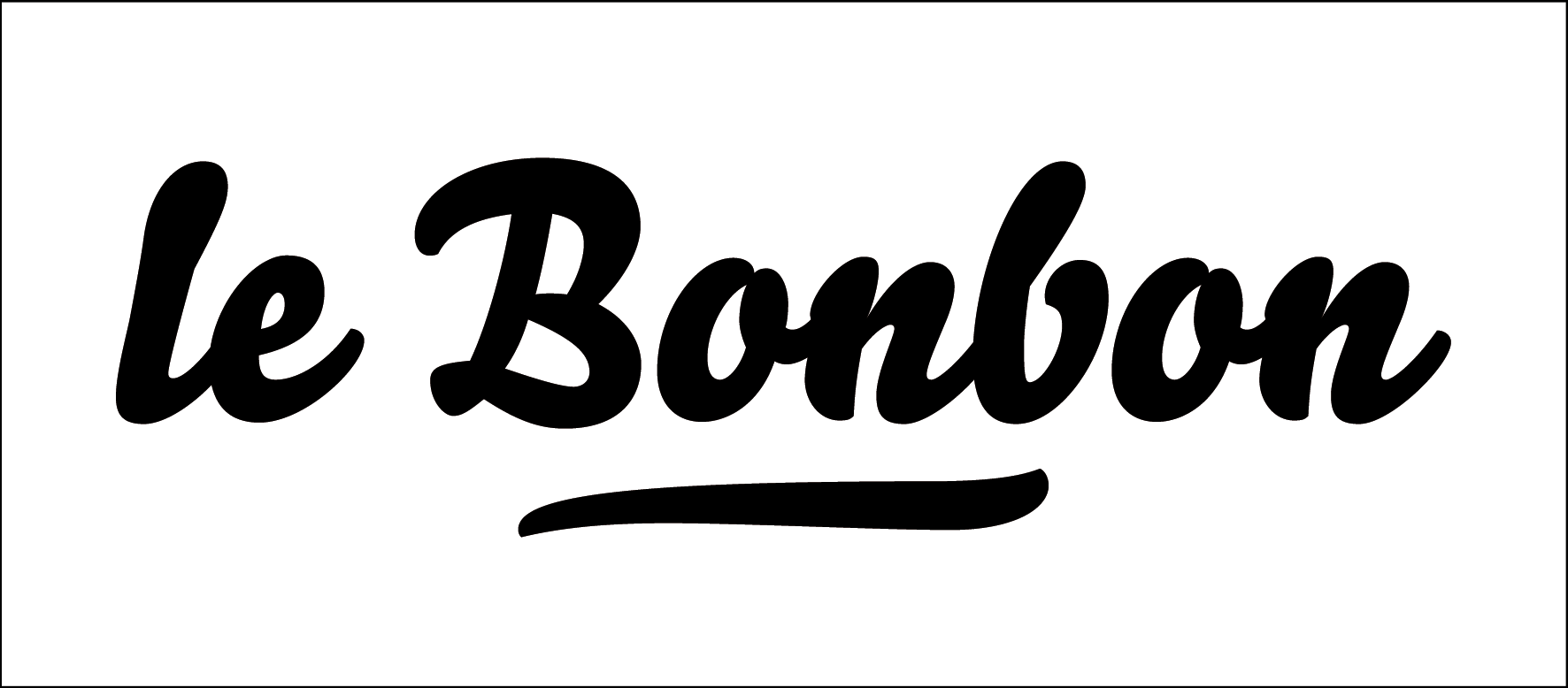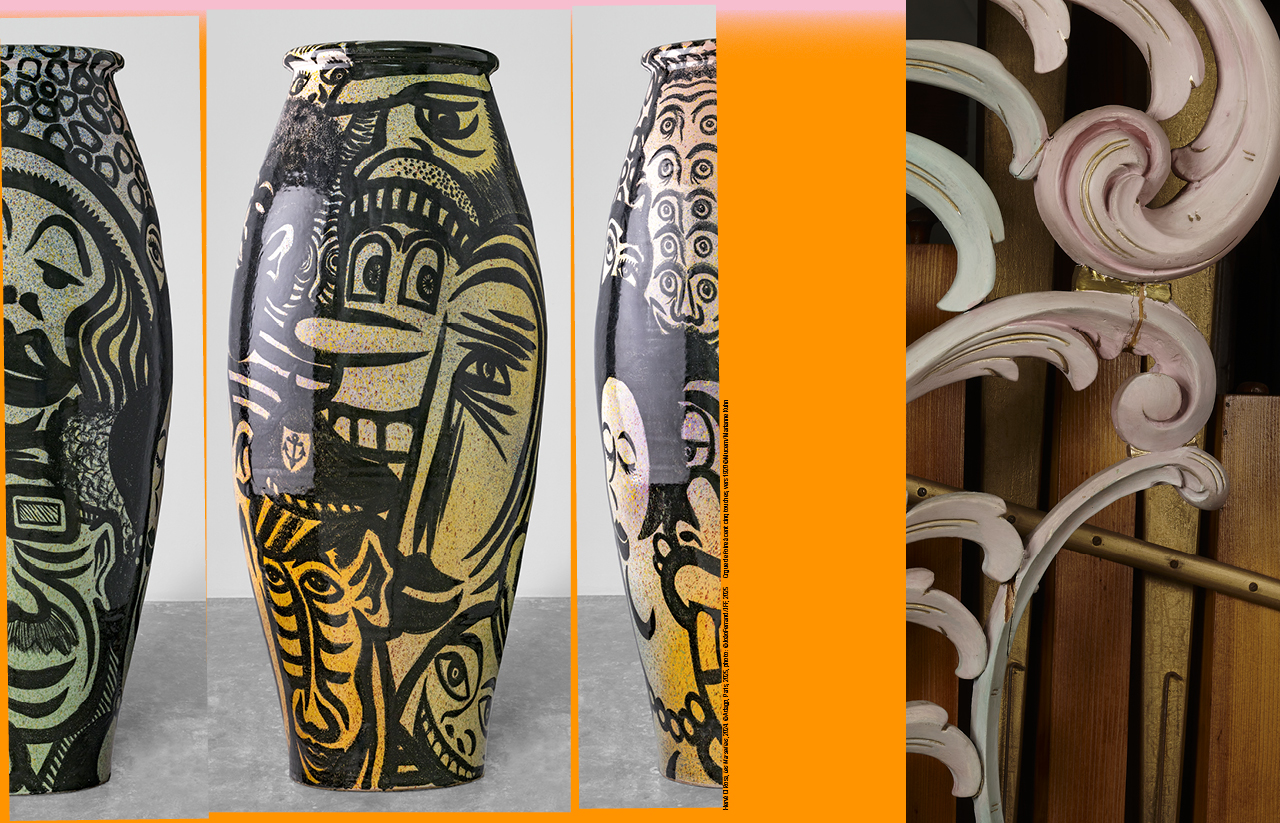
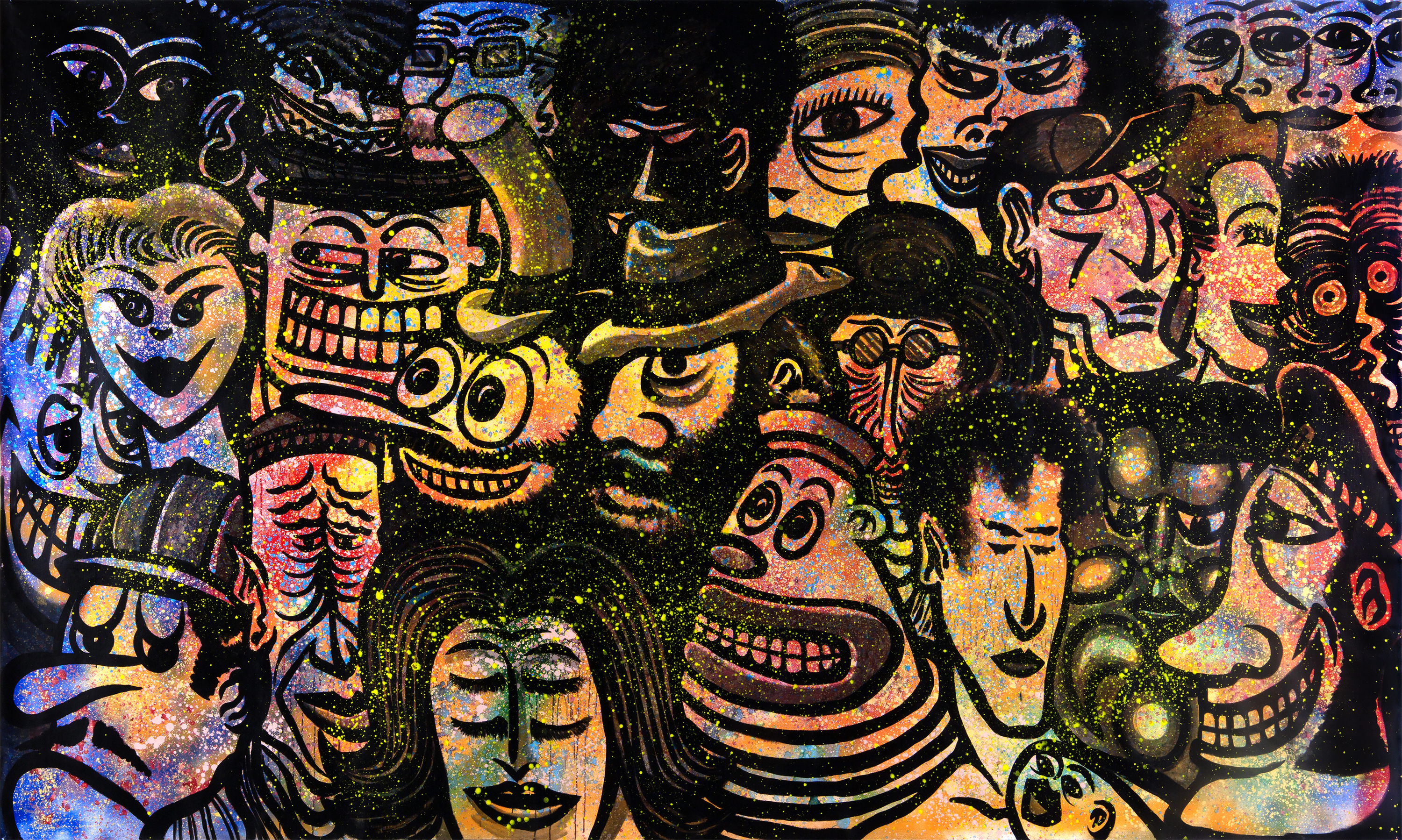
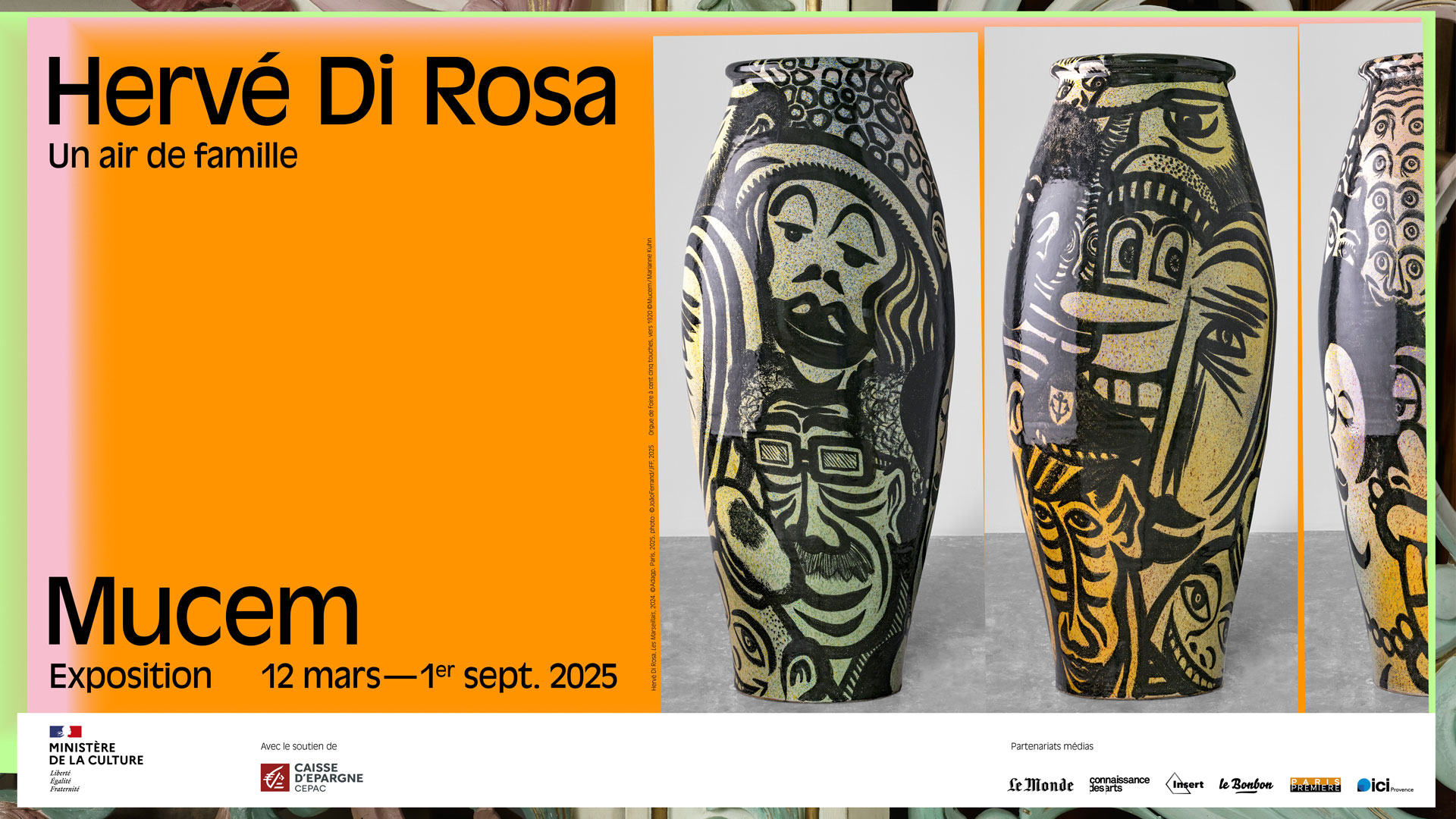
Bande-annonce de l'exposition « Hervé Di Rosa, Un air de famille »
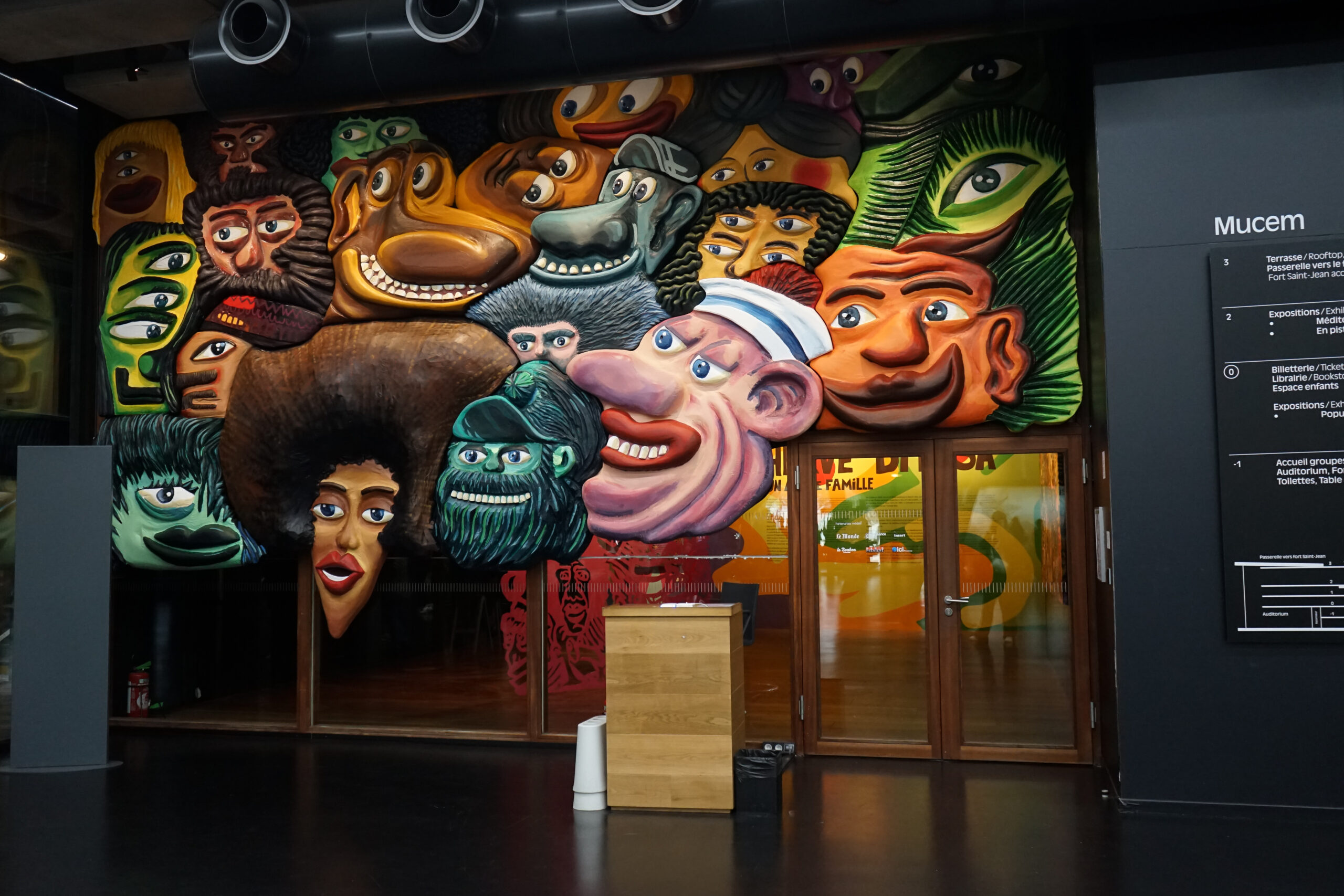
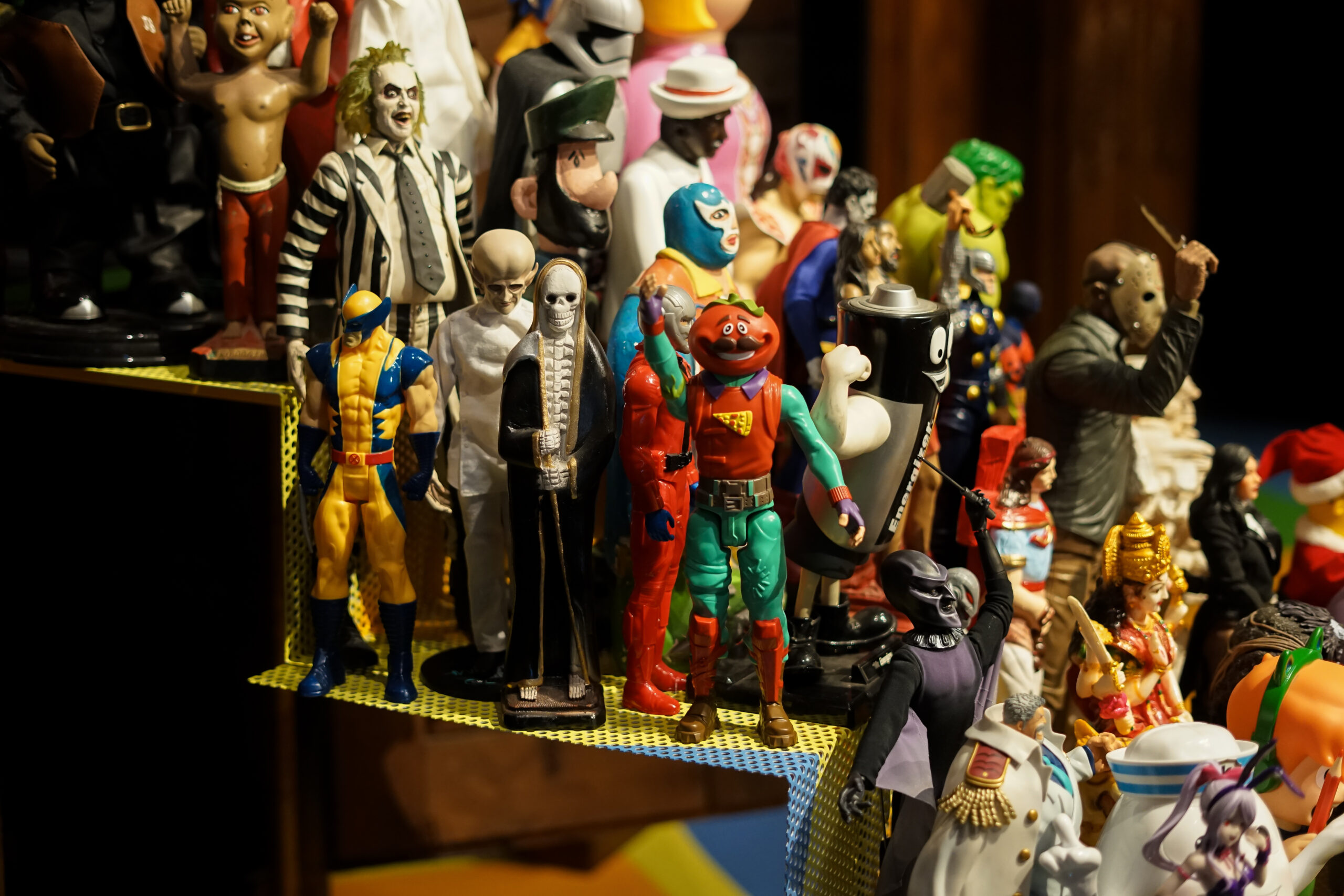
With total freedom, Hervé Di Rosa has chosen works from the Mucem's collections that appeal to his sensibility, to create a complementary piece around each of them.
Just as a ring is designed for a diamond, so a reliquary is built to highlight what is sacred. The artist felt that there was a family resemblance between his works and the folk art objects at the Mucem.
Three sculpted panels by Hervé Di Rosa, created in the Amadoua highlands of the Noun region (western Cameroon), stand alongside a fish-shaped merry-go-round. At the other end of the room, a ladder made of ox yokes collected in the French regions by the museum’s ethnographers seems to escape (or give wings?) to a resin cow painted by the artist. A long hunting rifle (3.70m!), once used for waterfowl, is presented amid a myriad of wooden birds, carved years ago by Marius Di Rosa. This collection of hunting decoys is all the more important as it is undoubtedly a founding element in the artist’s career: his father, an SNCF employee, spent much of his spare time carving and coloring decoys for duck hunting. From an early age, Hervé Di Rosa watched his father work wood, sculpting and painting it. These sculptures were not destined for the museum: created on the kitchen table, they were displayed on the water, in the ponds.
About the artist
Hervé Di Rosa
To present the beautiful and patient work of embedding Hervé Di Rosa’s custom-made works in the Mucem collections, an inventive and joyful itinerary was needed. Artistic director Jean Seisser, a long-standing accomplice of Hervé Di Rosa, imagined the exhibition as an archipelago made up of some fifteen islets. Each of these islands brings together some of the objects in the Mucem collections with a creation by Hervé Di Rosa. Each island tells its own story, freely interpretable by the visitor.
Around the works in the exhibition
Works by Hervé Di Rosa
Works in the collections
Curious about everything and driven by a strong desire to travel the world, immediately after graduating from high school he enrolled at the École Nationale Supérieure des Arts Décoratifs (Paris). Wherever and whenever he goes, Hervé Di Rosa works with local artisans. Those who, throughout the world, know how to update their know-how with each new generation, to create works for the places where they appear, and the people who live there.
A large painting on canvas depicts the “Marseillais”, and their portraits also form the backdrop for the suspended claustras that punctuate the exhibition.
The exhibition catalog
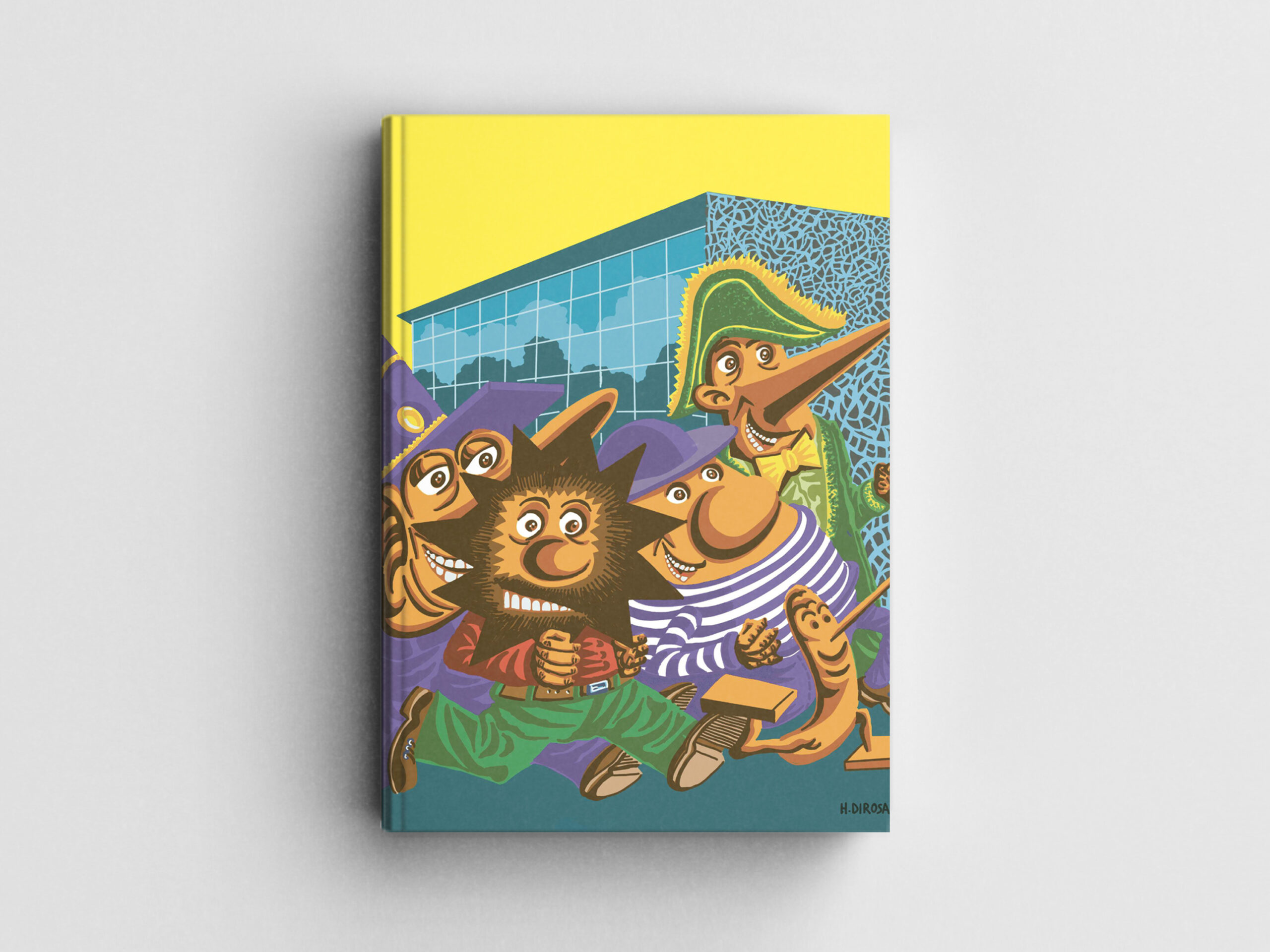
In keeping with the exhibition’s installation-like feel, where everything is mixed together, and where a small folk art object can be grandly presented, the book takes the form of a comic book, with a lively, cheerful cover specially designed by Hervé Di Rosa.
Art Direction
Jean Seisser, art critic
Police station
Vincent Giovannoni, Chief Curator, Head of the Performing Arts Department, Mucem
Scenography
Gabrielle Laurin Mercury and Studio Mash
With total freedom, Hervé Di Rosa has chosen works from the Mucem's collections that appeal to his sensibility, to create a complementary piece around each of them.

Just as a ring is designed for a diamond, so a reliquary is built to highlight what is sacred. The artist felt that there was a family resemblance between his works and the folk art objects at the Mucem.
Three sculpted panels by Hervé Di Rosa, created in the Amadoua highlands of the Noun region (western Cameroon), stand alongside a fish-shaped merry-go-round. At the other end of the room, a ladder made of ox yokes collected in the French regions by the museum’s ethnographers seems to escape (or give wings?) to a resin cow painted by the artist. A long hunting rifle (3.70m!), once used for waterfowl, is presented amid a myriad of wooden birds, carved years ago by Marius Di Rosa. This collection of hunting decoys is all the more important as it is undoubtedly a founding element in the artist’s career: his father, an SNCF employee, spent much of his spare time carving and coloring decoys for duck hunting. From an early age, Hervé Di Rosa watched his father work wood, sculpting and painting it. These sculptures were not destined for the museum: created on the kitchen table, they were displayed on the water, in the ponds.

Bande-annonce de l'exposition « Hervé Di Rosa, Un air de famille »
About the artist
Hervé Di Rosa

To present the beautiful and patient work of embedding Hervé Di Rosa’s custom-made works in the Mucem collections, an inventive and joyful itinerary was needed. Artistic director Jean Seisser, a long-standing accomplice of Hervé Di Rosa, imagined the exhibition as an archipelago made up of some fifteen islets. Each of these islands brings together some of the objects in the Mucem collections with a creation by Hervé Di Rosa. Each island tells its own story, freely interpretable by the visitor.

Around the works in the exhibition
Works by Hervé Di Rosa
Works in the collections
Curious about everything and driven by a strong desire to travel the world, immediately after graduating from high school he enrolled at the École Nationale Supérieure des Arts Décoratifs (Paris). Wherever and whenever he goes, Hervé Di Rosa works with local artisans. Those who, throughout the world, know how to update their know-how with each new generation, to create works for the places where they appear, and the people who live there.
A large painting on canvas depicts the “Marseillais”, and their portraits also form the backdrop for the suspended claustras that punctuate the exhibition.
The exhibition catalog

In keeping with the exhibition’s installation-like feel, where everything is mixed together, and where a small folk art object can be grandly presented, the book takes the form of a comic book, with a lively, cheerful cover specially designed by Hervé Di Rosa.
Art Direction
Jean Seisser, art critic
Police station
Vincent Giovannoni, Chief Curator, Head of the Performing Arts Department, Mucem
Scenography
Gabrielle Laurin Mercury and Studio Mash
